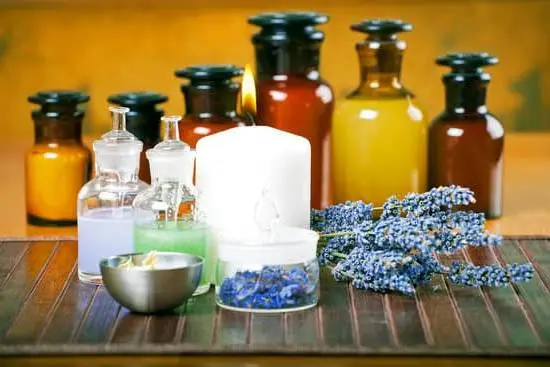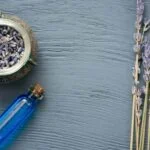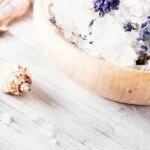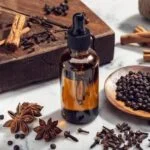Aromatherapy massage has a rich and fascinating history that has shaped its modern practice. Understanding this history is crucial in order to fully appreciate the origins and significance of this therapeutic treatment.
From ancient civilizations to its revival in the 19th and 20th centuries, the evolution of aromatherapy massage has been influenced by a diverse range of cultures and key historical figures. This article will provide a comprehensive overview of the history of aromatherapy massage, tracing its development from ancient origins to contemporary practice, and exploring its potential future trends.
The roots of aromatherapy massage can be traced back to ancient civilizations, where the use of essential oils for medicinal and therapeutic purposes was common practice. The development of aromatherapy massage in these early societies laid the foundation for its continued growth and evolution over time. Understanding the ancient origins of this practice provides valuable insight into its traditional uses and cultural significance.
As we delve into the history of aromatherapy massage, we will explore how it developed during the Middle Ages, with its role in traditional medicine and its influence on different cultures. The Renaissance and Enlightenment periods also played a significant role in shaping the evolution of aromatherapy massage techniques, with contributions from key historical figures leading to advancements in its practice.
From there, we will examine how aromatherapy massage experienced a revival in modern times, with a renewed interest in scientific research and evidence-based practice driving its incorporation into healthcare and wellness settings around the world.
Ancient Origins
The ancient origins of aromatherapy massage can be traced back to civilizations such as ancient Egypt, China, and India. These early cultures used essential oils extracted from plants for their medicinal and therapeutic properties. The use of aromatic oils in combination with massage techniques was believed to promote physical and emotional well-being.
In ancient Egypt, aromatic herbs and oils were used in religious ceremonies, medicine, and in the process of mummification. Similarly, in China, the use of essential oils in massage therapy was documented as early as 2700 BC in the Yellow Emperor’s Classic of Internal Medicine.
The development of aromatherapy massage continued in ancient Greece and Rome, where aromatic baths and massages were commonly practiced for health and relaxation purposes. The renowned Greek physician Hippocrates advocated for the use of scented baths and fragrances to promote healing. During this time, essential oils were also used for their antiseptic properties on wounds and injuries, demonstrating the early recognition of their therapeutic benefits.
In India, the traditional practice of Ayurveda utilized aromatic oils for their healing properties as well. The use of essential oils was incorporated into daily rituals, such as anointing the body with fragrant oils before meditation or yoga practices. These ancient origins demonstrate how aromatherapy massage has been deeply rooted in human history, shaping its cultural significance and relevance throughout different civilizations around the world.
- Ancient Egypt: Use of aromatic herbs and oils in religious ceremonies
- China: Documentation of essential oil use in massage therapy
- Greece and Rome: Advocacy for scented baths and fragrances for health purposes
- India: Incorporation of essential oils into Ayurvedic rituals
Development in the Middle Ages
The Middle Ages was a pivotal period for the development of aromatherapy massage, as traditional medicine and therapeutic practices continued to evolve. During this time, the use of essential oils for medicinal and therapeutic purposes became more widespread, with various cultures contributing to the expansion of aromatherapy massage techniques.
Role of Aromatherapy Massage in Traditional Medicine
In the Middle Ages, aromatherapy massage played a significant role in traditional medicine across different cultures. Ancient texts from civilizations such as China, India, and Persia documented the use of aromatic materials for healing purposes. The practice of using essential oils through massage techniques to promote physical and emotional well-being became an integral part of traditional medical systems during this period.
Influence of Different Cultures on the Practice
The Middle Ages saw the exchange of ideas and knowledge between different cultures, leading to the enrichment and diversification of aromatherapy massage practices. The Arab world, in particular, made significant contributions to the development of aromatherapy massage by distilling essential oils and documenting their healing properties. Additionally, European monasteries played a crucial role in preserving ancient knowledge related to aromatic substances and their therapeutic applications.
As aromatherapy massage continued to gain prominence during the Middle Ages, it laid the foundation for its future evolution and global influence. Understanding its historical roots is essential in comprehending how this practice has transformed over time and continues to be an integral part of holistic health and wellness today.
Renaissance and Enlightenment
The Renaissance and Enlightenment period marked a significant evolution in the practice of aromatherapy massage. During this time, there was a shift towards a more scientific understanding of the therapeutic benefits of essential oils and the massage techniques used in conjunction with them.
This era saw the contributions of key historical figures such as Paracelsus, who is considered to be one of the founding fathers of modern pharmacology and is known for his work with herbal medicine and plant-based remedies.
Evolution of Aromatherapy Massage Techniques
One notable development during the Renaissance and Enlightenment was the refinement of massage techniques used in aromatherapy. The use of essential oils in massage became more systematic and was often combined with other healing modalities such as herbal medicine and hydrotherapy. This period also saw the emergence of specific protocols for blending and applying essential oils for therapeutic purposes, laying the groundwork for modern aromatherapy practices.
Contributions of Key Historical Figures
The Renaissance and Enlightenment period also saw significant contributions from key historical figures who shaped the development of aromatherapy massage. In addition to Paracelsus, other notable individuals such as Leonardo da Vinci and Avicenna made important contributions to the understanding of medicinal plants and their therapeutic properties. Their works laid the foundations for modern botanical studies and pharmacological research, influencing the incorporation of essential oils in massage therapy.
The Renaissance and Enlightenment period marked a crucial turning point in the history of aromatherapy massage, setting the stage for its continued evolution into modern times. By embracing the advancements made during this era, we can gain a deeper understanding of how aromatherapy massage has been shaped by historical influences, ultimately enriching its practice today.
19th and 20th Century Revival
The 19th and 20th centuries marked a significant revival of aromatherapy massage, as the practice experienced a resurgence in popularity and recognition. During this time, there was a renewed interest in traditional healing methods and natural remedies, leading to the rediscovery of the therapeutic benefits of essential oils and massage techniques. The Industrial Revolution also played a role in this revival, as people sought relief from the stressful and physically demanding work environment through holistic practices like aromatherapy massage.
One key factor contributing to the revival of aromatherapy massage was the incorporation of scientific research and evidence-based practice. As advancements in medical science and technology grew, researchers began to study the therapeutic properties of essential oils and their effects on the body and mind. This led to an increased understanding of the physiological and psychological benefits of aromatherapy massage, further solidifying its place in modern healthcare and wellness practices.
Furthermore, historical figures such as Rene-Maurice Gattefosse and Jean Valnet made significant contributions to the development and popularization of aromatherapy massage during this period. Gattefosse’s research on essential oils led to the term “aromatherapy,” while Valnet’s clinical experience with using essential oils for treating wounded soldiers during World War II helped validate the effectiveness of aromatherapy massage.
Their work not only shaped the modern practice of aromatherapy massage but also paved the way for future advancements and innovations in this field. Thus, understanding the historical context of 19th-20th century revival is vital in comprehending how it has influenced contemporary practice today.
Global Influence
In the 19th and 20th centuries, the revival of aromatherapy massage led to its global influence as the practice spread to different parts of the world. This was a result of increased trade and cultural exchange between nations, allowing for the introduction of essential oils and massage techniques to new regions. As a result, the practice underwent cultural variations and adaptations in different parts of the world.
The global influence of aromatherapy massage can be seen in its incorporation into traditional medicine systems in countries such as India, China, and Japan. In these regions, essential oils were integrated into ancient healing practices such as Ayurveda, Traditional Chinese Medicine (TCM), and Kampo medicine. The use of aromatic substances for therapeutic purposes has been deeply rooted in these cultures for centuries, demonstrating the enduring impact of history on modern practices.
Furthermore, with the globalization of healthcare and wellness practices, aromatherapy massage has been embraced by people from diverse cultural backgrounds. This has led to the development of new blends of essential oils based on regional preferences and availability. For example:
- In Southeast Asia: The use of lemongrass and ginger essential oils for their invigorating and warming properties
- In Europe: The popularity of lavender and chamomile essential oils for their calming and soothing effects
- In North America: The utilization of eucalyptus and peppermint essential oils for respiratory health
This global influence highlights how history has shaped the contemporary practice of aromatherapy massage, emphasizing the importance of embracing its rich cultural heritage for a deeper understanding of its applications worldwide.
Contemporary Practice
Aromatherapy massage has been used for centuries to promote physical and emotional well-being. In contemporary practice, this ancient healing art continues to thrive as a popular form of complementary therapy in healthcare settings and wellness centers around the world.
The modern application of aromatherapy massage incorporates the use of essential oils extracted from aromatic plants to enhance the therapeutic effects of massage, providing relief from stress, anxiety, and various physical ailments. This section delves into the current trends and applications of aromatherapy massage in today’s society.
One notable aspect of contemporary aromatherapy massage is its integration into conventional healthcare practices. Many hospitals and medical facilities are now offering aromatherapy massage as part of their holistic approach to patient care. Research has shown that the use of essential oils during massages can help reduce discomfort and improve overall well-being in individuals undergoing medical treatment. Additionally, aromatherapy massage is increasingly being utilized in hospice care to provide comfort and support for patients with terminal illnesses.
Moreover, with the growing interest in alternative medicine, many individuals seek out aromatherapy massage for its relaxation and stress-relief benefits. Wellness centers, spas, and private practitioners offer a wide range of aromatherapy massage services tailored to address specific health concerns or simply for relaxation purposes. This has led to an increasing demand for certified aromatherapists who specialize in providing safe and effective aromatherapy treatments.
Lastly, there is also a trend towards combining aromatherapy massage with other holistic healing modalities such as acupuncture, reflexology, and yoga. As people continue to explore natural approaches to health and wellness, the synergy between different complementary therapies offers a more comprehensive and personalized approach to holistic care.
| Aspect | Details |
|---|---|
| Integration into Healthcare | Aromatherapy massage is becoming more commonly offered in hospitals and medical facilities as part of holistic patient care. |
| Popularity in Wellness Centers | A growing number of wellness centers and spas are providing specialized aromatherapy massage services to meet the demand for natural relaxation therapies. |
| Combination with Other Holistic Therapies | The trend towards integrating different complementary therapies highlights a shift towards a more personalized approach to holistic care. |
Future Trends
The future of aromatherapy massage is an exciting prospect that is shaped by its rich history and continued innovations in the field. As this practice continues to gain recognition and acceptance in modern healthcare and wellness, there are potential advancements and trends that could further enhance its therapeutic benefits.
One of the future trends in aromatherapy massage involves the integration of technology to improve the delivery of this traditional practice. With the use of advanced diffusers, smart devices, and virtual reality experiences, individuals can immerse themselves in a multi-sensory aromatherapy massage experience that combines visual, auditory, and olfactory stimuli for enhanced relaxation and healing.
Another trend on the horizon is the growing emphasis on personalized aromatherapy massage treatments. With a deeper understanding of individual preferences, body chemistry, and specific health needs, practitioners are exploring customized blends of essential oils tailored to each client’s unique requirements. This personalized approach aims to optimize the therapeutic effects of aromatherapy massage for better overall wellbeing.
Additionally, there is a continuous exploration of new essential oils from different plants and botanical sources that could expand the range of benefits offered by aromatherapy massage. Scientific research into lesser-known oils and potential synergistic blends may uncover novel applications for addressing specific health conditions or promoting emotional balance.
These future trends reflect how history has paved the way for ongoing innovation in aromatherapy massage as it continues to evolve and adapt to meet the needs of modern society.
| Future Trends | Importance |
|---|---|
| Integration of technology | Enhances delivery for a more immersive experience |
| Personalized treatments | Optimizes therapeutic effects based on individual needs |
| Exploration of new essential oils | Expands potential benefits and applications |
Conclusion
In conclusion, the history of aromatherapy massage provides a rich and fascinating background to the practice. From its ancient origins in civilizations like Egypt, China, and India to its development and revival in different periods of history, aromatherapy massage has evolved into an essential aspect of holistic healing and wellness.
Understanding this history is crucial as it offers insights into the traditional uses of essential oils for medicinal and therapeutic purposes, as well as the evolution of techniques and applications over time.
Moreover, delving into the history of aromatherapy massage allows us to appreciate the contributions of key historical figures and various cultures in shaping this practice. From the Middle Ages to the Renaissance and Enlightenment, different traditions and knowledge were exchanged, leading to a diverse and global influence on aromatherapy massage. This underlines the importance of recognizing cultural variations and adaptations in different regions when practicing aromatherapy massage today, adding depth and authenticity to the approach.
Looking ahead, embracing the rich history of aromatherapy massage can also guide future trends and advancements in the field. By acknowledging its roots and historical significance, practitioners can maintain a sense of reverence for this ancient practice while integrating modern scientific research and evidence-based methods. Ultimately, incorporating a deep understanding of the history of aromatherapy massage will not only enrich contemporary practice but also ensure that its legacy continues to thrive for generations to come.
Frequently Asked Questions
When Did Aromatherapy Begin?
Aromatherapy has been used for centuries, dating back to ancient civilizations such as the Egyptians, Greeks, and Chinese. They utilized aromatic plants and essential oils for medicinal and religious purposes.
What Did the Ancient People Use Aromatherapy For?
The ancient people used aromatherapy for a variety of reasons, including promoting physical and emotional well-being. They believed in the healing properties of aromatic plants and oils to cure ailments, elevate mood, and enhance spiritual practices.
What Is the History of Aromatherapy Associates?
Aromatherapy Associates is a British company that has been at the forefront of the aromatherapy movement since its founding in 1985 by Geraldine Howard and Sue Beechey. They were dedicated to creating products that combined essential oils with skincare to promote overall wellness. Today, Aromatherapy Associates is recognized globally for its high-quality products and commitment to holistic healing.

Are you looking for a natural way to improve your health and wellbeing?
If so, aromatherapy may be the answer for you.





